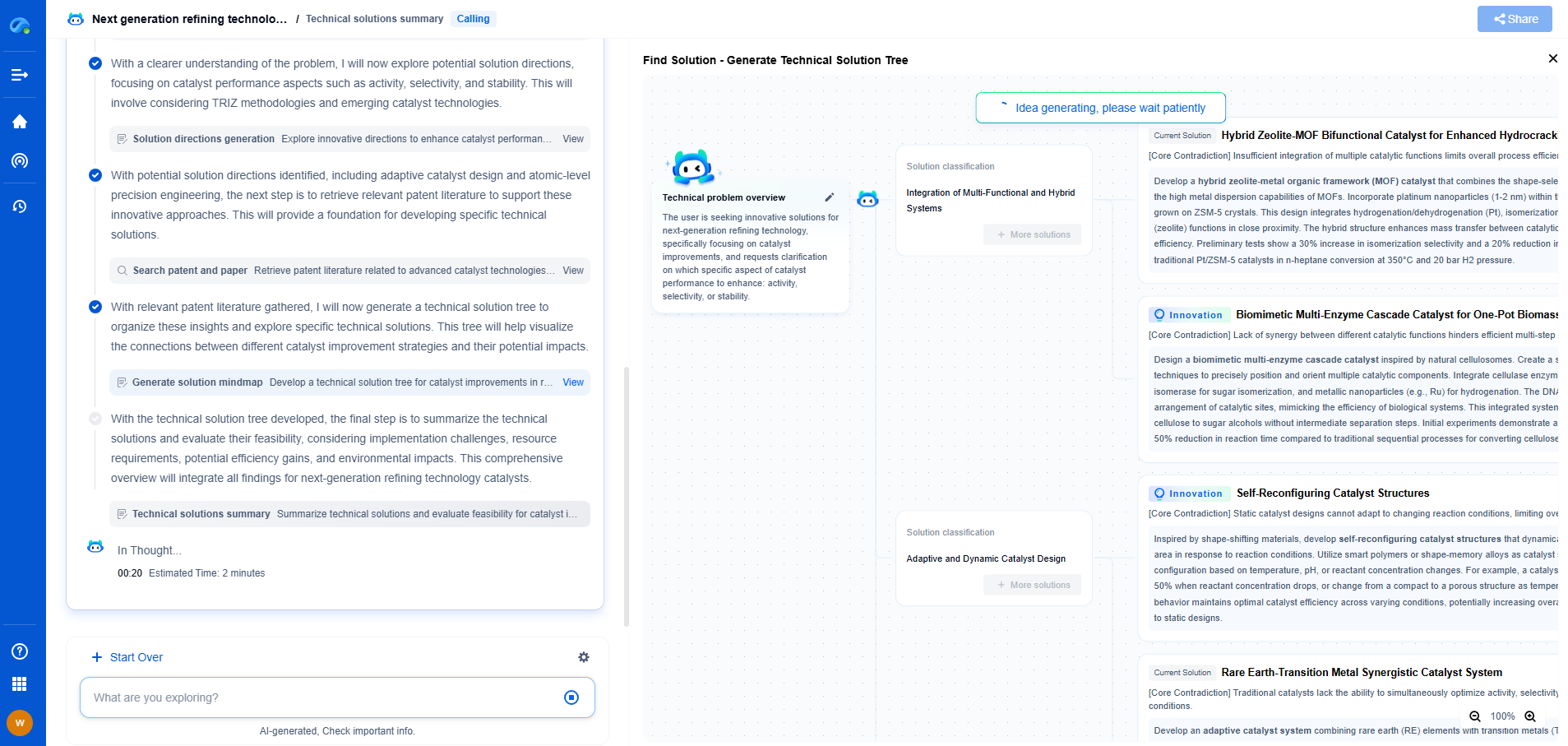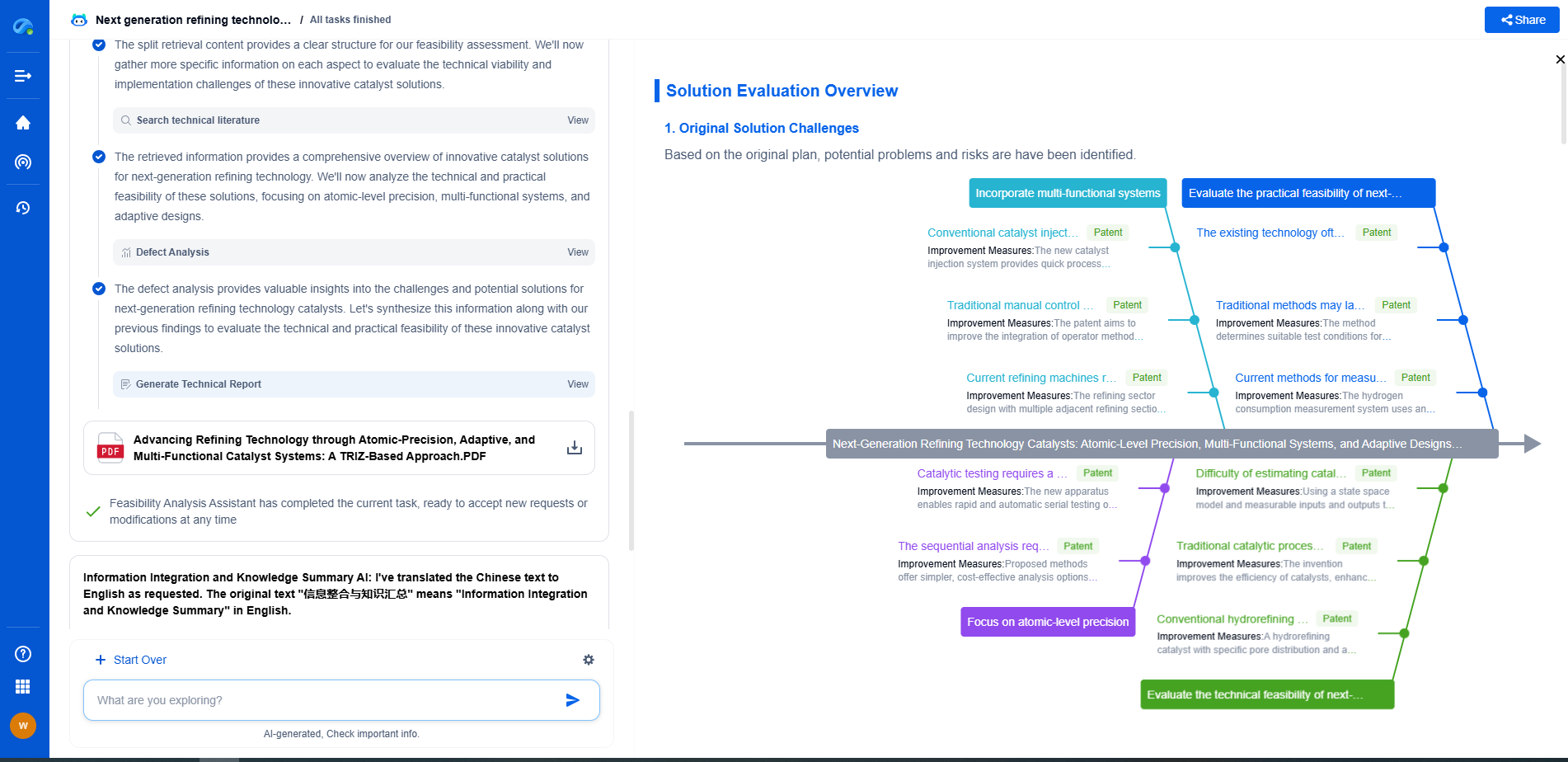Spectrum Analyzer Resolution Bandwidth (RBW): Optimizing for Noise and Detail
JUL 9, 2025 |
The world of spectrum analysis is vast and intricate, with various parameters influencing the quality and usability of the data obtained. Among these, the Resolution Bandwidth (RBW) plays a crucial role. Understanding and optimizing RBW is essential for balancing noise and detail in signal analysis. This article delves into the concept of RBW, its impact on spectrum analysis, and strategies for optimization.
Understanding Resolution Bandwidth
Resolution Bandwidth (RBW) refers to the range of frequencies that a spectrum analyzer filters during a measurement. It determines the ability of the analyzer to resolve closely spaced signals and affects the level of noise visible on the display. A narrower RBW allows for better resolution of signals that are close together in frequency, but it also increases measurement time and noise visibility. Conversely, a wider RBW results in faster sweep times and less noise visibility, but can blend closely spaced signals together, making it harder to distinguish them.
The Impact of RBW on Noise
One of the primary considerations when setting the RBW is the balance between noise and signal detail. A narrow RBW reduces the noise floor, providing a clearer view of weak signals within the spectrum. This is particularly beneficial when analyzing low-level signals or signals that are close to the noise floor. However, as the RBW narrows, the measurement time increases, which can be a drawback in scenarios requiring rapid analysis or when dealing with dynamic signals.
On the other hand, a wider RBW increases the noise floor, which might obscure weak signals but significantly reduces the sweep time. This is advantageous in situations where speed is critical, or when analyzing signals with a high dynamic range. The choice of RBW, therefore, involves a trade-off between noise level and resolution, depending on the specific requirements of the analysis.
Optimizing RBW for Signal Detail
The key to effective spectrum analysis lies in optimizing the RBW to achieve the desired level of signal detail without excessive noise. When analyzing closely spaced signals, a narrower RBW is essential to resolve individual components. This is particularly important in applications such as communication systems, where overlapping signals can cause interference issues.
In cases where signal resolution is not a priority, or when analyzing broader frequency ranges, a wider RBW may be more suitable. This allows for quicker sweeps and a broader overview of the spectrum, making it easier to identify major signal components and assess their relative strengths. The goal is to select an RBW that provides sufficient detail for the task at hand while maintaining an acceptable level of noise.
Practical Considerations in RBW Selection
Several practical considerations can guide the selection of an appropriate RBW. First, consider the nature of the signals being analyzed. Are they closely spaced or widely separated? Are they at the noise floor level, or are they strong and clear? Understanding the signal characteristics can help determine the most appropriate RBW setting.
Next, consider the measurement objectives. Are you looking for detailed analysis of specific signals, or a broad overview of the spectrum? The measurement goals should drive the RBW selection process, balancing the need for detail against the constraints of time and noise.
Finally, account for the capabilities and limitations of the spectrum analyzer being used. Different analyzers may have varying RBW ranges, affecting the precision and speed of measurements. Familiarity with the equipment can provide insights into the optimal RBW settings for different scenarios.
Conclusion
Resolution Bandwidth is a pivotal parameter in spectrum analysis, influencing both the noise floor and the resolution of signals. By carefully selecting and optimizing the RBW, analysts can achieve a balance between noise and detail, ensuring accurate and efficient signal evaluation. As technology advances and the demand for precise signal analysis grows, mastering RBW settings becomes an increasingly valuable skill in the spectrum analysis toolkit.
Navigating the evolving world of electrical measurement—from high-precision signal integrity to advanced test protocols like BERT or TDR—demands more than just expertise; it demands smart tools.
Patsnap Eureka empowers you to keep up—by turning complex patent data, technical parameters, and industry signals into actionable insight. It’s your AI partner for exploring what’s next in test, measurement, and electrical diagnostics.
💡 Try Patsnap Eureka for free and see how it transforms the way you work with electrical measurement technologies.
- R&D
- Intellectual Property
- Life Sciences
- Materials
- Tech Scout
- Unparalleled Data Quality
- Higher Quality Content
- 60% Fewer Hallucinations
Browse by: Latest US Patents, China's latest patents, Technical Efficacy Thesaurus, Application Domain, Technology Topic, Popular Technical Reports.
© 2025 PatSnap. All rights reserved.Legal|Privacy policy|Modern Slavery Act Transparency Statement|Sitemap|About US| Contact US: help@patsnap.com

